We recommend products and services based on unbiased research from our editorial team. We make money via affiliate links, which means if you click a link on our site, we may earn a commission. Any commissions we receive do not affect our recommendations; if you want to know more about how that works, read more.
For most people, streaming is now the primary way to watch TV.
There are now roughly 120–150 distinct, consumer-facing streaming services available in the U.S. (depending on whether you include SVOD, AVOD/FAST platforms, and live TV “vMVPD” bundles). Aggregator directories corroborate this breadth — see JustWatch’s U.S. provider list and Reelgood’s “150+ services”. Earlier broad counts of “200 streaming services” mixed categories and small network apps, and older Nielsen analyses predate today’s market. Streaming now commands the largest share of TV usage, per Nielsen’s State of Play and The Gauge.
But all that choice also breeds confusion. Amid routine price changes, constantly fluctuating libraries and channel lineups, and new options sprouting up, streaming TV has never felt more mainstream — or more overwhelming.
Our goal was to simplify that process and help you build your perfect replacement for (or supplement to) cable. We focused on two main categories for this review: live TV streaming services that stream cable channels through your internet connection and on-demand services like Netflix and Hulu that let you watch programs when you want them. After extensive research and hands-on testing, we found the best TV streaming services for a range of needs.
The 9 Best TV Streaming Services
How We Chose the Best Live TV Streaming Services
Overall channel selection
Companies that stream live TV often promote the raw number of channels in their lineups, but more isn’t necessarily better. A lineup of 98 channels might sound impressive until you realize you’re paying for lots of channels you’ll never watch. We prioritized the channels and brands consumers actually value and use today — a mix of broadcast networks, core sports and news, and popular lifestyle/entertainment — rather than sheer count.
Earlier benchmarks like Nielsen’s older analyses and TiVo’s 2017 Q4 Trends Report captured what viewers wanted then, but preferences have shifted. We now lean on current indicators such as SRG’s Must Keep TV (which blends broadcast/cable networks and top streaming brands), Nielsen’s The Gauge for actual usage, and broad popularity data from YouGov. Sports and news remain critical anchors, while lifestyle networks (HGTV, Food Network, Discovery family, Hallmark) continue to add everyday value.
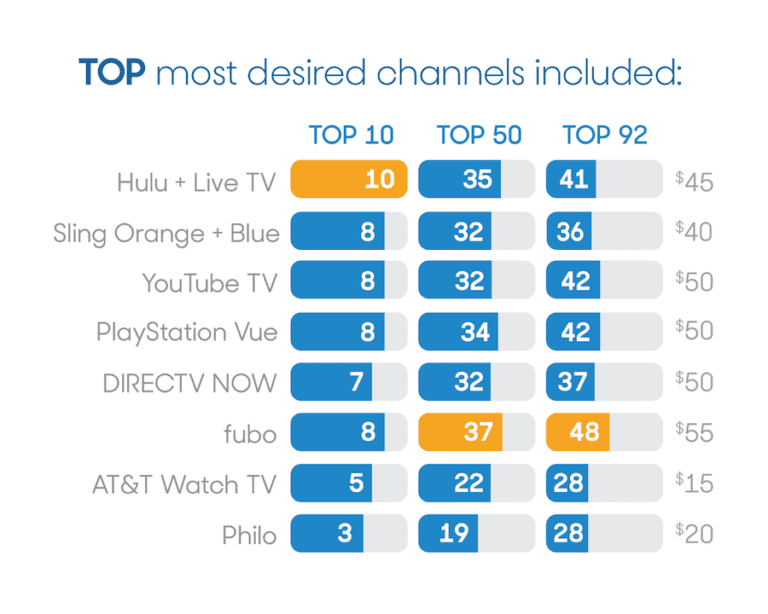
Availability by location
Big networks like ABC, CBS, Fox, and NBC are essential for most people who want to stream live TV, but exact offerings change by ZIP code — especially for regional sports networks (RSNs). Always check availability for your address using official tools before subscribing. Start with league blackout/territory pages for MLB, NBA, and NHL, then confirm your local RSN and providers via RSN channel finders (for example, MSG, YES, Monumental) and your provider’s ZIP checker (e.g., DIRECTV STREAM). For a sense of the current vMVPD landscape, see The Streamable’s guide.
Using that information, we gave extra weight to services with strong coverage of local networks and RSNs in major markets. Rights deals change regularly, so availability can improve — or disappear — without much notice. Always verify with your exact ZIP code.
Quality of sports channels
We emphasized access to the sports brands that drive viewing and perceived value. Current usage and rankings consistently place ESPN and key event carriers (on broadcast, TNT/TBS, FS1, etc.) near the top, and cable news remains a major retention driver for many homes. We combined “must‑keep” perceptions (SRG) with recent viewing trends (e.g., top cable networks by total day/primes as summarized by NextTV) to prioritize channels that most affect day‑to‑day satisfaction.

Device compatibility
Price and channels matter most — but only if the app runs on your devices. Today, most live TV apps support all major platforms. Notably, YouTube TV now officially supports Amazon Fire TV and Sony PlayStation 4/5, in addition to Roku, Apple TV, Google TV/Android TV, smart TVs, and more. See YouTube TV’s supported devices and recent feature rollouts like multiview on Fire TV and Google TV (coverage; update).
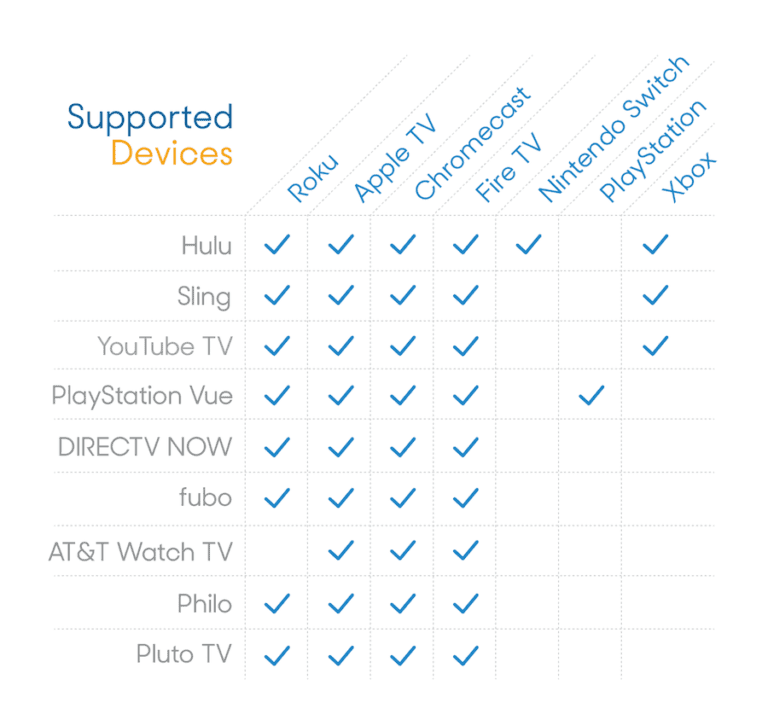
DVR storage and simultaneous streams
Cloud DVR and stream limits have evolved. Leading live TV services now offer “unlimited” cloud DVR with time‑based retention — for example, YouTube TV and Hulu + Live TV include unlimited DVR with recordings that typically expire after about nine months (YouTube TV DVR; Hulu Cloud DVR). Concurrency is tiered: YouTube TV includes 3 simultaneous streams (with an add‑on for unlimited at home; details), Hulu + Live TV includes 2 (with an Unlimited Screens add‑on; details), and others like Fubo offer higher at‑home limits (details).
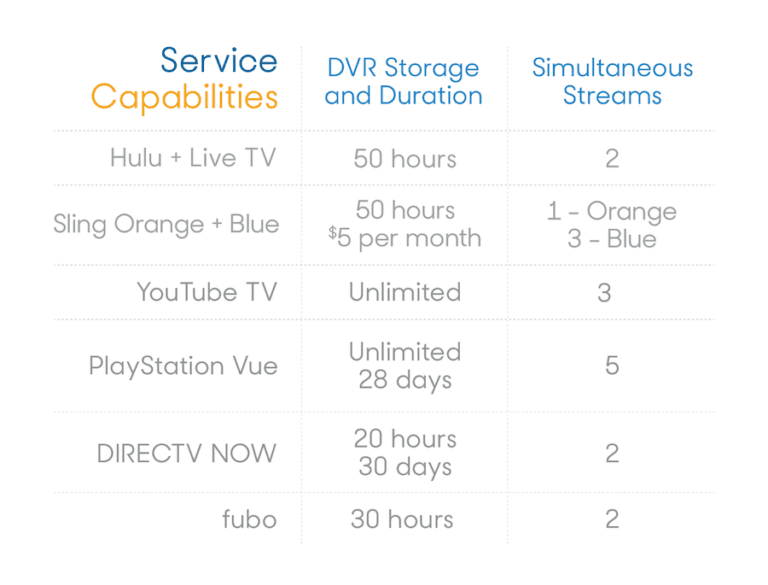
The Best Live TV Streaming Services
Pros
Best channel lineup
Comes with Hulu on-demand
Carries most live sports
50 hours of DVR storage
Cons
Frustrating interface
Only two simultaneous streams
Why we chose it
Well-rounded lineup and bundle value
Hulu + Live TV offers a broad, well-balanced channel lineup that covers local broadcast networks, core sports and news, and popular lifestyle programming — the mix most households consider a “complete” bundle today. It also includes access to Hulu’s on‑demand library and, with current plans, Disney+ and ESPN+ access, which adds meaningful value for families and sports fans (plans).
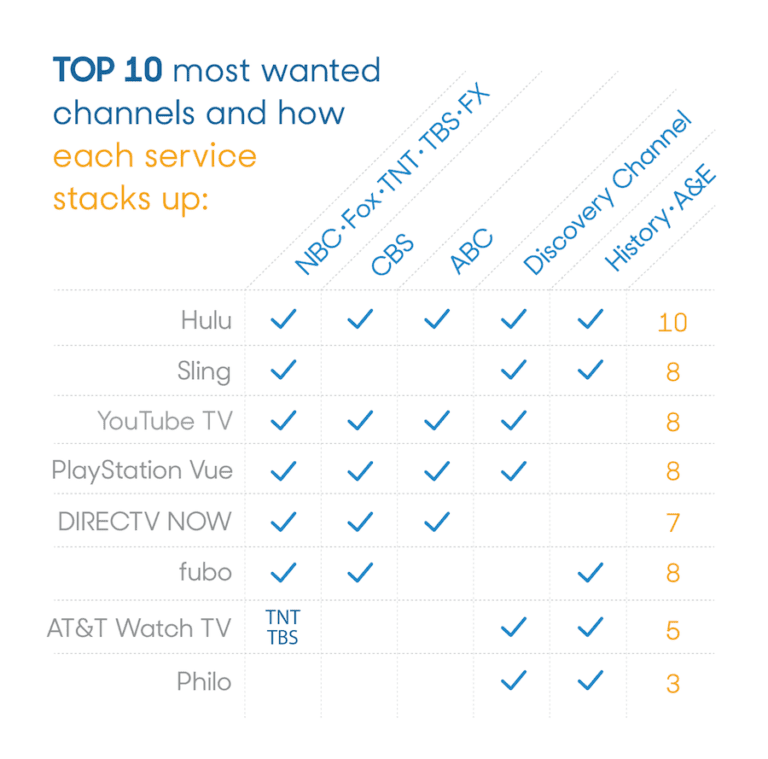
Comes with Hulu on-demand
Your subscription includes Hulu’s on‑demand library alongside live TV, so you can stream a large catalog of shows and movies whenever you want. If you prefer ad‑free on‑demand viewing, there’s an upgraded Hulu (No Ads) + Live TV plan (current pricing).
Carries the networks most people expect
For most households, the essentials are local broadcast networks, ESPN for national sports, at least one major cable news network, and a selection of lifestyle and entertainment channels. Hulu + Live TV delivers that core mix in many markets; confirm specific channels and RSN coverage by entering your ZIP code before you subscribe.
Unlimited cloud DVR
Hulu + Live TV includes unlimited cloud DVR with recordings that typically expire after about nine months, so you can save as much as you want without micromanaging storage (details).
Points to consider
Interface can feel busy
Hulu’s interface has improved over time but can still feel busy to navigate, especially in the live guide on some devices. Personalization and recommendations help, but if a traditional grid guide is your preference, test the experience during a free trial to make sure it fits your habits.
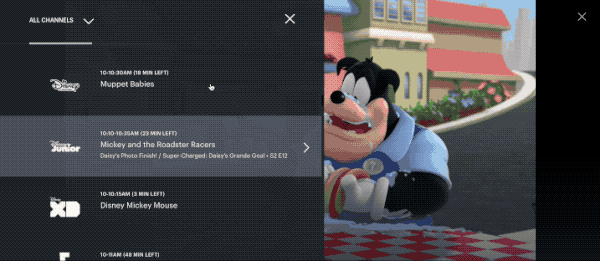
Hulu has acknowledged the need to keep iterating on the experience over time, and we expect continued refinements.
Two streams by default (add-on available)
Hulu + Live TV includes two simultaneous streams by default. The Unlimited Screens add‑on lifts that to unlimited at home (plus additional mobile streams) with some network‑specific exceptions (details).
Pros
Great for live sports
Intuitive interface and navigation
Unlimited DVR storage
Cons
Average channel selection overall
Not compatible with Fire TV or PlayStation
Why we chose it
Great for live sports
YouTube TV remains one of the strongest options for sports fans thanks to broad coverage of national sports networks and local affiliates in many markets, an intuitive live guide, and sports-friendly features like multiview for big game days (multiview).
Intuitive interface and navigation
YouTube TV is an absolute pleasure to use. With its clean interface and bold, easy‑to‑read lettering, it prioritizes usability and smart organization over clutter.

The live guide also shows a hover preview as you browse, so you can see what’s on without fully switching channels — handy during halftime or commercial breaks.
Unlimited DVR storage
YouTube TV includes unlimited cloud DVR with recordings that auto‑expire after nine months, so you never have to worry about running out of space (details).
Points to consider
Confirm your must‑have channels and RSNs
Lineups change. Before you switch, enter your ZIP on YouTube TV’s site to confirm locals, sports, and news coverage — and use league blackout tools and RSN channel finders if local team access is critical.
Now compatible with Fire TV and PlayStation
YouTube TV officially supports Amazon Fire TV and PlayStation 4/5, alongside most major platforms (supported devices; PS4 launch coverage: The Verge). To install, search for “YouTube TV” in the Amazon Appstore or PlayStation Store and sign in with your Google account.
Pros
Inexpensive
Includes five of the 10 most popular channels
Cons
No local channels or sports
No DVR or simultaneous streams
Why we chose it
Former budget pick (now discontinued)
AT&T WatchTV was once a low‑cost “skinny bundle,” but the service has been discontinued. If you’re seeking a budget‑friendly live TV option today, consider value‑focused bundles (for example, Sling TV, Philo, Frndly TV) and compare their channel mixes and features to your priorities (current vMVPD options).
Good fit for light channel needs
“Skinny” bundles work best if you mainly want a handful of entertainment and lifestyle networks and don’t need every sports or local channel. Make a short list of your must‑keeps before you choose.
Points to consider
Often fewer locals and sports
Value‑priced bundles often skip local broadcast affiliates and RSNs to keep costs down. If local teams matter, confirm blackout rules with the leagues (MLB; NBA; NHL) and use RSN/provider ZIP tools before subscribing.
Feature sets vary
DVR storage, simultaneous streams, and device support differ widely among budget plans. Check the fine print so you’re not surprised later.
Pros
13 news channels
Old shows from MTV, Nick, and BET
Several popular sports channels
Cons
Few recognizable cable channels
Inopportune commercial breaks
Why we chose it
Lots of live news
If you love politics but hate your cable bill, check out Pluto TV. It offers numerous 24/7 news streams from major brands and partners, giving cord‑cutters easy access to breaking coverage and live events without a subscription.
Throwback channels from MTV, Nick, and BET
Thanks to Pluto’s parent company, you’ll find themed channels drawing on libraries from Paramount brands like MTV, Nickelodeon, Comedy Central, BET, and more — a boon for nostalgia‑minded viewers.
Free sports news and occasional live events
Expect a mix of sports news, highlights, analysis, and periodic live events from participating partners — all without adding another monthly bill.
Points to consider
Few recognizable cable channels
While it has plenty of names you’ll recognize, don’t expect Pluto to deliver the same first‑run shows and movies you get from paid cable channels or premium streamers. It’s best for comfort rewatching and background TV.
Inopportune commercial breaks
As a free, ad‑supported service, Pluto’s commercial breaks can sometimes interrupt programs abruptly. It’s a small trade‑off for a $0 price tag.
How We Chose the Best On-Demand TV Streaming Service
Large content budget
Originals and licensed hits both matter. Because streamers rarely disclose “originals‑only” spend, we looked at the closest comparable figures: company‑level content cash spending or content expense. Today, Netflix indicates around $17B in 2024 content cash spend with a step‑up expected as live/sports programming ramps; Amazon reports video and music content expense in the high‑teens to about ~$20B; Disney guides to mid‑$20B company cash content spend; Warner Bros. Discovery invests in the high‑teens to ~$20B; and industry estimates place Apple TV+ in the mid‑ to high‑single digit billions (Netflix IR; Amazon 10‑K; Disney IR; WBD filings; FT reporting on Apple TV+).
Spending more isn’t a guarantee of “best,” but if you only subscribe to one service, heavier content reinvestment can improve your odds of finding new shows and movies you’ll actually watch.
High-quality original programming
As more studios keep their franchises on their own platforms, originals have become critical differentiators. We weighted services that consistently deliver buzzy, well‑reviewed series and films, while also considering “must‑keep” consumer sentiment and real‑world usage across platforms (SRG Must Keep TV; Nielsen State of Play).
Licensed TV shows and movies
Originals may sell a subscription, but licensed catalog still drives a lot of everyday viewing. We favored services with deep, regularly refreshed libraries and smart windowing strategies, which Nielsen finds are key to retaining engagement even as options multiply (Nielsen).
The Best On-Demand TV Streaming Services
Pros
Best selection of popular shows and movies
Original content
Investment in content
Family programming
Cons
Fewer network shows
Expensive
Why we chose it
Best selection of popular shows and movies
Netflix remains a top “must‑keep” service for U.S. households and continues to dominate streaming usage charts thanks to a broad mix of originals and licensed hits (SRG Must Keep TV; Nielsen’s The Gauge). If you want a single subscription with breadth across genres, it’s still the safest all‑around pick.
The movie slate is similarly strong and constantly refreshed, with a mix of exclusive originals and licensed favorites that sustain day‑to‑day viewing.
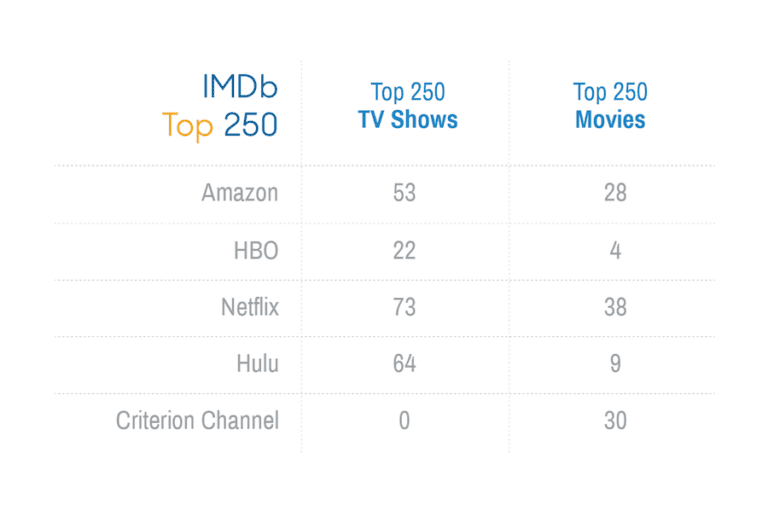
Original content
From global phenomenon series to event films — and now select live/special programming — Netflix continues to invest heavily in originals that shape the cultural conversation.
On investment, Netflix has reiterated roughly $17B in recent annual content cash spend, with a modest step‑up expected as live and sports programming grows (earlier coverage; see the latest in Netflix’s shareholder materials).
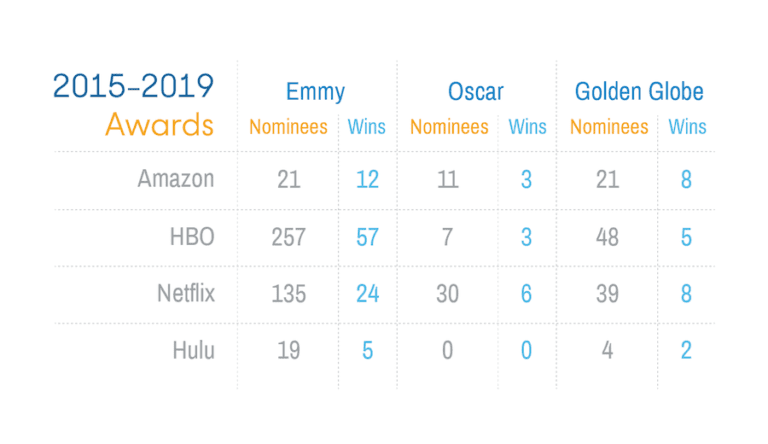
Family programming
Netflix’s kids and family catalog spans originals and beloved classics, with robust parental controls and dedicated profiles to keep things organized for younger viewers.
Points to consider
Fewer next‑day network shows
If keeping up with broadcast TV the day after it airs is your top priority, Netflix isn’t geared for rapid next‑day access. Look to live TV bundles or services that specialize in next‑day broadcast availability.
Plan prices vary by quality and streams
Netflix’s U.S. plans currently start at $6.99/month with ads, $15.49/month for Standard (no ads), and $22.99/month for Premium (no ads, 4K, more streams). Basic is no longer available to new or rejoining members (current pricing).
Pros
Network shows
Shows available the day after they air
Ad-supported plan
Cons
Less original content
Weak movie library
Why we chose it
Network shows
Hulu has long excelled at next‑day access to many broadcast and cable series, making it a strong choice for viewers who primarily want to keep up with current TV without a cable subscription.
Shows available shortly after they air
For many shows, new episodes arrive shortly after broadcast. Specific availability varies by network and licensing, so check the show page if timing is important.
Ad-supported or ad-free plans
We like that Hulu gives you options: Hulu (With Ads) is $7.99/month, while Hulu (No Ads) is $17.99/month. If you also want live channels, Hulu + Live TV plans bundle in Hulu on‑demand and access to Disney+ and ESPN+ (current pricing).
Points to consider
Smaller original slate than Netflix
Hulu’s originals catalog is smaller than Netflix’s, though it includes several acclaimed, award‑winning series. If originals are your main draw, compare lineups before deciding.
Movie library focuses on licensed rotations
Hulu’s movie selection relies heavily on rotating licensed titles. If you want the deepest film catalogs, you may prefer pairing Hulu with a service like Netflix, Max, or The Criterion Channel.
Pros
Amazon Prime benefits
Enormous library
HBO back catalogue
Cons
No new network shows
Weak original content
Why we chose it
Amazon Prime benefits
You can subscribe to Prime Video on its own, but most people get it as part of an Amazon Prime membership, where it’s bundled with free shipping, photo storage, Prime Music, rotating reading perks, and more.
Enormous library
Prime Video’s catalog spans thousands of licensed movies and shows, Amazon Originals, and a robust store for rentals and purchases — plus the option to add premium channel subscriptions from within the app.
Premium add-ons
You can subscribe to premium networks as add‑ons (e.g., Max), bringing classic HBO series and other prestige TV into the Prime Video interface for one‑stop browsing and billing.
Points to consider
Fewer next‑day network shows
Prime Video doesn’t focus on next‑day broadcast access. If that’s important, consider Hulu or a live TV service.
Investment is significant but varies by category
Amazon’s latest filings show video and music content expense in the high‑teens to around ~$20B annually, spanning Originals, licensed titles, and live rights like Thursday Night Football (Amazon 10‑K; earlier industry context). Quality and volume vary by year as Amazon tunes its slate.
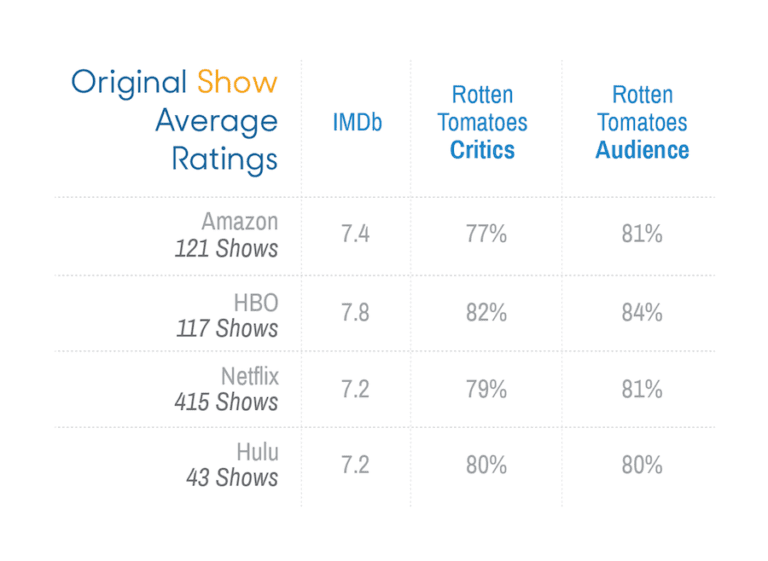
Movies and limited series often stand out on Prime Video; check trailers and ratings before diving in to match your taste.
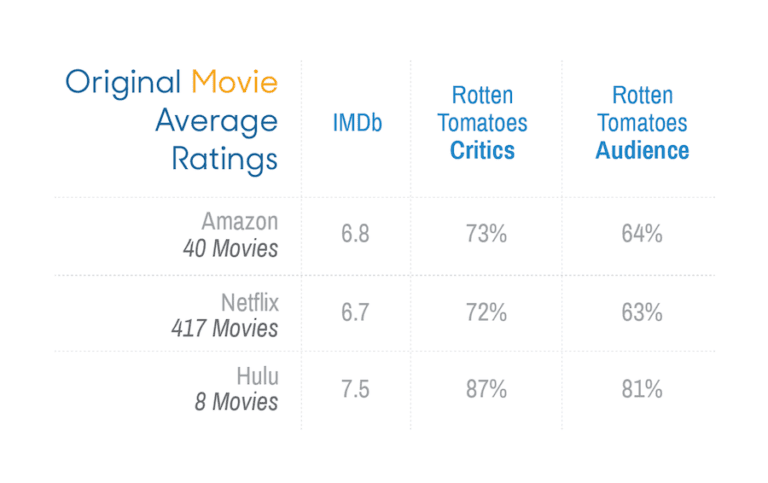
Pros
Hit shows
Great selection of documentaries
Cons
Fewer titles overall
Expensive
Why we chose it
Hit shows
More than almost any service, Max (the home of HBO) routinely delivers zeitgeist‑defining series and limited runs. If you chase critical darlings and conversation‑starter TV, Max remains a go‑to destination.
Great selection of documentaries
Max offers a deep library of acclaimed documentaries and docuseries, with new titles debuting throughout the year alongside a curated back catalog.
Points to consider
Fewer titles overall
Compared to Netflix or Prime Video, Max has a smaller overall catalog. The trade‑off is a focus on premium, highly curated programming over sheer volume.
Pricing tiers
Max offers multiple tiers: With Ads ($9.99/month), Ad‑Free ($16.99/month), and Ultimate Ad‑Free with 4K ($20.99/month). Depending on your needs, it can price above some competitors (current plans).
Pros
Classic films
Bonus features
Four simultaneous streams
Offline viewing
Cons
Fewer new or popular movies
No TV shows
Why we chose it
Classic films
A subscription to The Criterion Channel is like a course in film history: a large, curated library of important classic and contemporary films, from early cinema to recent festival standouts. On critics’ lists — like Sight and Sound’s top 100, which Roger Ebert called “the most respected” poll — Criterion titles are heavily represented.
For lovers of arthouse, world cinema, and restorations, Criterion offers context you won’t find elsewhere.
Bonus features
Many films include supplemental features — essays, interviews, and curated collections — that deepen your appreciation of the work and the artists behind it.
Four simultaneous streams
The Criterion Channel allows you to stream on up to four devices at the same time, making it easy for households of cinephiles to share an account.
Offline viewing
Along with Prime Video and Netflix, The Criterion Channel lets you download titles to watch offline on iOS and Android — ideal for flights or commutes.
Points to consider
Fewer new or mainstream blockbusters
Criterion focuses on classics, restorations, and art‑house films. If you mainly want the latest mainstream releases, pair it with a broader service.
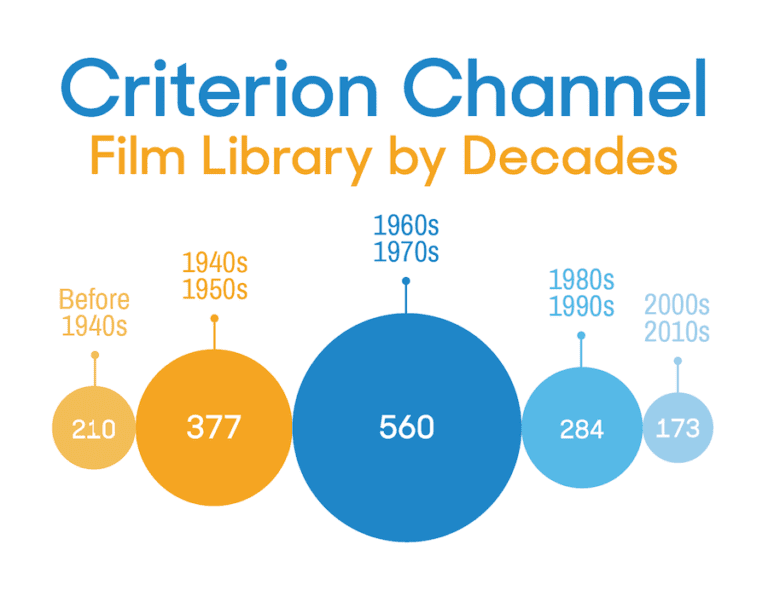
No TV shows
Unlike most on‑demand services, The Criterion Channel is devoted entirely to films, not series.
Guide to TV Streaming Services
How to find the right TV streaming service for you
Decide which channels you need
Before you start comparing packages, list the channels and brands you can’t live without. Want to follow your local teams? Make sure your pick covers local broadcast networks and your regional sports network (or offers an in‑market DTC option). If you don’t care about locals or RSNs, you can save with a slimmer bundle. Check out live TV streaming services for more info, and see a current overview at The Streamable.
Check your ZIP code
To avoid surprises, enter your ZIP code on the provider’s website and use official tools to confirm locals and RSNs. League blackout pages for MLB, NBA, and NHL will also tell you whether you’re inside a team’s home territory.
Sign up for free trials
Most live TV streaming services offer free trials or promotional periods. Test drive the interface, DVR, and channel guide to see how they fit your day‑to‑day viewing before you commit.
Invest in a smart TV, gaming console, or streaming device
Once you’ve settled on a service, you’ll need a solid internet connection and a way to stream it to your TV. Recent smart TVs and popular devices like Roku, Apple TV, Google TV/Android TV, and Amazon Fire TV support the major apps. You can also use game consoles (PlayStation 4/5, Xbox) for many services — for example, YouTube TV supports Fire TV and PlayStation (supported devices).
TV Streaming Services FAQs
Compare the Best TV Streaming Services
| Hulu + Live TV | YouTube TV | AT&T Watch TV | Pluto TV | Netflix | Hulu | Amazon Prime Video | HBO Now | The Criterion Channel | |
| Best Live TV Streaming | Best Sports Streaming | Best Skinny Bundle | Best Free TV Streaming | Best On-Demand Library | Best for Network Shows | Best Perks | Best for Original Shows | Best for Classic Films | |
| Starting at | $55/month | $50/month | $15/month | Free | $9/mo | $6/mo | $9/mo | $15/mo | $11/mo |
| Simultaneous streams | 2 | 3 | 1 | 1 | 1 for Basic ($9), 2 for Standard ($13), 4 for Premium ($16) | 2 | 3 | 3 | 4 |
More TV Streaming Reviews
Check out our in-depth reviews of everything you’ll need to start streaming:





















